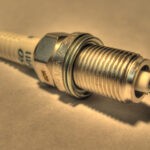Nova vs. Chevelle- a Detailed Comparison
Nova and Chevelle were the top-powered and sporty cars introduced by the American automotive Brand, Chevrolet. In the late 1960s, these two cars were called the muscle cars i.e. cars with powerful engines and stylish looks. If you have ever seen a Nova or Chevelle, some of the kid’s toy automobiles would look similar to you.
No doubt, these both cars were iconic cars in America. Still, there are some differences in their design, shape, and engine specification. So, in this article, I will review each of these cars, and then compare them in terms of their design and performance.
NOVA and CHEVELLE
First, let me give me a brief introduction of each one individually.
NOVA
The word “Nova” means small. So, the American Automobile manufacturer named its small sub-compact cars Nova. Earlier, in 1962, when Chevrolet started its production, the initial name was Chevy II. The Chevrolet II was designed to compete with Ford’s phenomenally popular 1960 Falcon. Internally known as the X-body, it was also offered in Canada and Chile as the Acadian.
The high-end variant, officially known as the Chevy II Nova 400, came in two- or four-door sedans, four-door wagons, two-door convertibles, and two-door hardtop coupes.
Collectively, the company launched five generations of Nova. The generation model years were 1962-1965, 1966-67, 1968-74, 1975-79, and 1985-88. The smallest engine a Nova features was an I4, 76 HP, 1.6 L engine and the largest was a 6.6 L. 375 HP, V8 engine. Finally, the company discontinued its production in 1988.
Also read: Is it Worth Keeping a Classic Car? (+Best Cars to Keep)
Chevelle
Chevrolet introduced Chevelle in 1964. The Chevelle was designed to fill the gap between Impala and the Nova. The Chevelle was likewise designed to compete against the Ford Fairlane. Like Buick Skylark and Oldsmobile Cutlass, Chevelle was constructed on the A-body chassis.
The Chevelle was only produced for a few years, from 1964 to 1977. This vehicle came in a wide range of configurations, ranging from 2-door sports coupes to 4-door wagons. Chevy introduced three generations.
The 1968 SS 396 is by far the most popular Chevelle among collectors. This was the most popular model at the time, and it was titled “King of the Muscle Car Era.”
Major Differences
Now, let’s car compare these cars in terms of their history, body shape, design, platform, engine specifications, and key strengths.
History
Nova was Chevy’s one of the earliest produced cars. It was introduced in 1962 with the name Chevy II, which later became Nova.
Speaking of Chevelle it was introduced in 1964, as a competitor car to Ford’s Fairlane.
Body Shape, Design, and Size
Nova’ Design
The first-generation (1962-1965) Nova was a compact car available in 2-door, 4-door sedan, wagon, and convertible options. It had a width of 70.8 inches and a wheelbase of 110 inches. The second generation (1966-67) also offered similar designs and dimensions.
However, in the third generation (1968-74), the body style shifted to the 2-door coupe, 3-door hatchback, and 4-door sedan. In addition, a semi-automatic transmission was also introduced during this time. The wheelbase of the cars increased to 111 inches. Again, the fourth generation (1968-74) of Nova was pretty similar to the third one in terms of body shape and design.
The last and fifth generation (1985-88) came with a lot of changes. Nova became a sub-compact car. It was introduced as a 4, and 5-door hatchback sedan. The platform shifted to Toyota AE82 (GM S). Another addition was the introduction of a 4, and 5-speed automatic transmission system and a front-wheel drive. The final generation Nova had a wheelbase of 95.7 inches.
Chevelle’s Design
Speaking of Chevrolet Chevelle, its first generation (1964-67) had 2, 4-door sedans, hatchbacks, station wagons, and utility coupes. These generation cars had a wheelbase of 115 inches, and a length of 197 inches.
The second-generation Chevelle (1968-72) came with a 2 and 4-door sedan, station wagon, hardtop, convertible, and coupe. It had a 3-speed automatic transmission system. In these generation cars, the coupe one had a wheelbase of 112 inches and a sedan/wagon of 116 inches.
The last generation Chevelle (1973-77) came in 2, 4-door coupe, sedans, and station wagons. They had a 4-speed manual and 3-speed automatic transmission. Likewise, in the second generation, the coupe had a wheelbase of 112 inches and a sedan/wagon of 116 inches.
Platform and Successor Models
Five generations of Nova were introduced. Each generation came with new improvements that had advanced features compared to its predecessors. The platform in each case was X-body except for the fifth generation.
And all cars had an FR Layout i.e. front engine and rear-wheel drive. The initial model was named Chevy II. In 1963, a sports model, known as Nova SS was introduced. It had a 298 HP V8 engine.
With changing generations, the sports model and base variants changed in terms of body styles, transmission, and engine power. All Nova cars were built on X-platform except the fifth generation, which had Toyota AE82 (GMS) platform. Chevy was succeeded by Chevrolet Citation.
Chevelle had three generations. It was built on an A-body platform and had FR Layout. Likewise, Nova, it also had a SuperSport Model, Chevelle SS. One of the famous models in the 1960s was Chevelle SS 396. Chevelle was succeeded by Chevrolet Malibu.
Also read: Do Classic Cars Have Airbags? Can You Install Them?
Engine Specifications
Chevrolet engines came in different configurations in the five generations, they had launched. Initially, there was an I4 engine with just 76 HP output. Then, the successor models had I6 and V8 engines with power output up to 375 HP in sports variants
Chevelle had I6 and V8 engines. Chevelle SS 396 had a V8 engine that could deliver up to 375 HP.
Keys Strengths
Now, let’s about the key strengths/pros of each of these cars. So, the top reasons to get a Nova are:
- Small compact car.
- Relatively easy to find these days.
- Parts are cheaper and interchangeable with early Camaros
- Relatively affordable to buy.
Some pros of getting a Chevelle include:
- Great looks
- Mid-size luxury car with lots of space.
- High powered engine
- Available at an affordable price.
- A cheaper option to consider in the sports category.
Nova vs Chevelle- a Brief Comparison
Since I have described the details of each car separately, let’s compare both of these together in a tabular form.
| Chevrolet Nova | Chevrolet Chevelle | |
| History | Introduced in 1962 | Introduced in 1964 |
| Generations | 5 Generations 1st Generation (1962-1965) 2nd Generation (1966-67) 3rd Generation (1968-74) 4th Generation (1975-79) 5th Generation (1985-88) | 3 Generations 1st Generation (1964-67) 2nd Generation (1968-72) 3rd Generation (1973-77) |
| Body Shaper/Styles | 2-door sedan / coupe 3-door hatchback 4-door sedan hatchback 5-door hatchback / sedan | 2,4-door sedan / hatchback / convertible / station wagon / coup |
| Wheel Base | 110 inches. (1st Gen) 111 inches. (2nd & 3rd Gen.) 95.7 inches. (5th Gen.) | 115 inches. (1st Gen) 112 inches & 116 inches (2nd & 3rd Gen.) |
| Platform | X-body Toyota AE82 (5th Gen.) | A-body |
| Successor Model | Chevrolet Citation | Chevrolet Malibu |
| Engine Type Specs. | I4, I6, &V8 Engine; Up to 375 HP | I6 & I8 engine; Up to 375 HP |
Typical Use Cases for Each Car
Nova and Chevelle are one of the most iconic muscle cars of Chevrolet.
The Chevy Nova has always been recognized as one of General Motors’ greatest little cars. Its line-up includes small-body, high-performance vehicles, which have been utilized in everything from drag racing to grand touring and have always been the preferred vehicle of any classic car enthusiast.
Chevy Chevelle was made to bridge the gap between Nova and Impala. It is mid-size comparatively larger in size than Nova. So, the use case of it has been the same as that of Nova. But being bigger, it was be considered a good family car. In addition, the sports variants were ideal for racing due to the classy looks and were seen in multiple movies.
Which Car is the Best?
Both of these were very of the best cars of their times. Choosing one is a difficult choice. But my personal choice among these two is Chevrolet Chevelle, due to its larger size, powerful engine, more classy looks, and multiple body options.
Sources:






